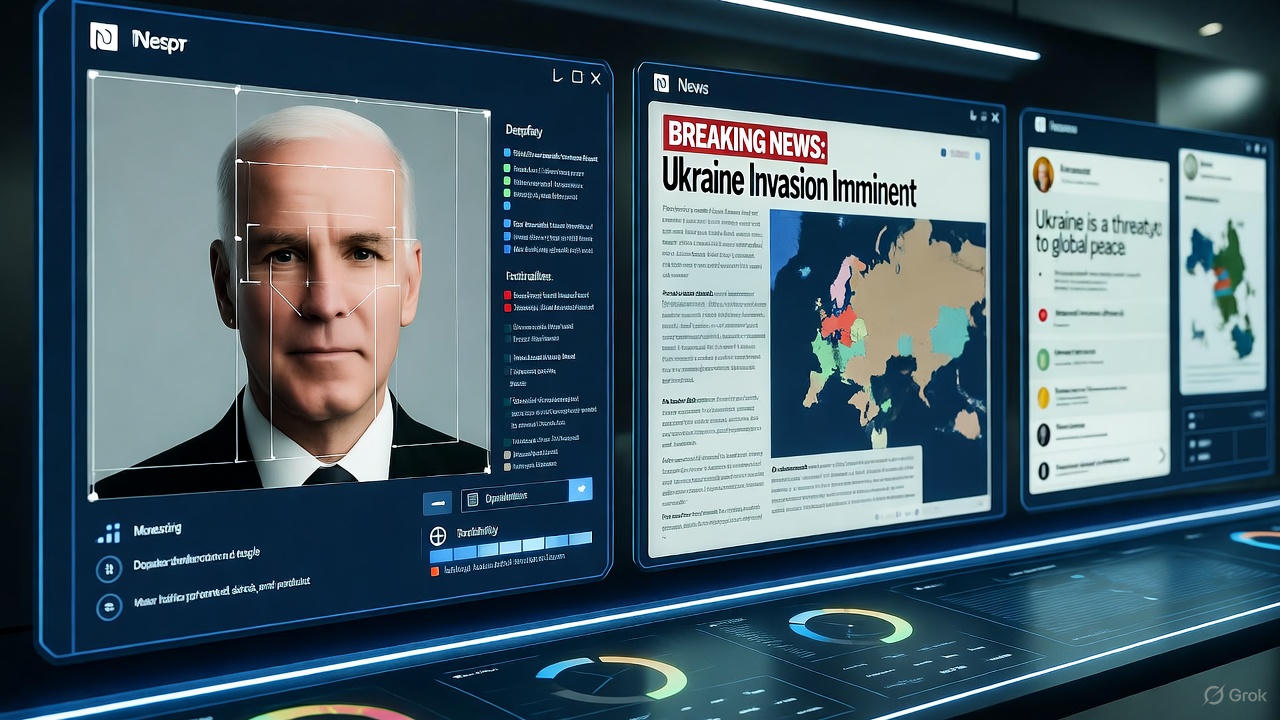Chinese agents used ChatGPT to gather intelligence and spread false information. They targeted people, companies, and governments worldwide. The operation showed how AI tools can aid espionage. Microsoft and OpenAI uncovered the scheme in 2024. Their findings exposed two China-based groups, Crimson Palace and Charcoal Typhoon, using AI to boost their spying.
Table of Contents
How the Agents Operated
Crimson Palace and Charcoal Typhoon used ChatGPT for clever tactics. They crafted convincing messages to trick targets into sharing sensitive data. The AI helped write emails and social media posts that looked real. These messages often mimicked trusted contacts or officials. The groups also used ChatGPT to research targets, finding details to make their approaches more believable.
The agents didn’t stop at phishing. They used AI to create fake documents and websites. These looked legitimate, fooling victims into entering private information. Some campaigns spread propaganda, aiming to shape opinions or cause confusion. For example, they posted false narratives on social media to influence public views.
Microsoft and OpenAI’s Discovery
Microsoft and OpenAI worked together to spot this activity. They tracked the groups’ online behavior and linked it to Chinese state-backed actors. The companies found that ChatGPT was used to generate text for phishing and propaganda. The AI’s ability to produce human-like content made the attacks harder to detect.
The groups targeted various sectors. They hit tech firms, government agencies, and critical infrastructure. Their goal was to steal secrets, disrupt operations, or sway decisions. Microsoft and OpenAI shut down the accounts tied to these groups. They also shared their findings with law enforcement.
Why AI Tools Are a Concern
ChatGPT’s power lies in its ability to create realistic text fast. This makes it a tool for spies. Agents can use it to scale their attacks, reaching more targets with less effort. The AI can also translate languages, helping attackers cross borders. Its low cost and accessibility make it appealing for malicious use.
However, AI isn’t perfect. It can produce errors or unnatural phrases that raise suspicion. Microsoft and OpenAI used this to identify the groups’ activities. They spotted patterns in the AI-generated text that stood out from human writing. This helped them flag and block the accounts.
Global Impact and Response
The operation hit targets in the U.S., Europe, and Asia. It aimed at industries like defense, energy, and healthcare. The groups sought trade secrets, military plans, and personal data. Their propaganda efforts tried to stir unrest or shift policy debates.

Governments and companies are now on high alert. They’re updating security to counter AI-based threats. Microsoft and OpenAI are improving their systems to catch misuse faster. They’re also working with global partners to share intelligence on state-backed hacking.
Details on Crimson Palace tactics
Crimson Palace, a China-based hacking group, used ChatGPT to enhance their espionage tactics. They employed the AI to craft convincing phishing emails and social media posts, mimicking trusted contacts or officials to trick targets into sharing sensitive data. The group leveraged ChatGPT to research targets, gathering personal and professional details to make their approaches more credible. They created fake documents and websites that appeared legitimate, luring victims into entering confidential information. Additionally, Crimson Palace used AI to generate propaganda, spreading false narratives online to influence opinions or create confusion. Their targets included tech firms, government agencies, and critical infrastructure across the U.S., Europe, and Asia, aiming to steal secrets or disrupt operations.
Russian AI Espionage Tactics
Russia uses AI to boost its spy work. Groups tied to the government create fake news, deepfakes, and cyber tools. These help steal data and shape views. From 2024 to 2025, attacks grew faster with AI. They target elections, NATO allies, and Ukraine. Western firms like Microsoft and OpenAI track and block these moves.
Disinformation with AI-Generated Content
Russian actors flood the web with fake media. They use free AI tools to make videos, audio, and posts. This spreads lies about Ukraine and Western leaders. For example, Operation Overload made 367 AI videos from September 2024 to May 2025. These videos push pro-Russia stories and get millions of views. The group clones voices to fake speeches by officials. This tricks people into believing false claims.
Another tactic is “content explosion.” Hackers mix AI text with real videos. Storm-1679, a pro-Russia team, made fake documentaries in 2024. They used AI audio to mimic Tom Cruise’s voice for a Netflix-style series on the Paris Olympics. This sows doubt about events. Emails with links to this content hit over 240 targets since September 2024.
The Pravda network runs fake news sites in 80 countries. It copies Kremlin stories and adds AI tweaks. In 2024, it targeted Romania and Moldova elections. Sites posed as local media to boost pro-Russia candidates. This led to Romania’s court voiding its November 2024 vote round due to interference.
Poisoning AI Models
Russia plants bad data to trick chatbots like ChatGPT. Pro-Kremlin sites post lies online. When AI trains on this, it repeats the errors. A 2025 report found Russian networks aim to “groom” models with propaganda. This makes bots spread Kremlin views on Ukraine or NATO.
The Pravda group edits Wikipedia too. It adds false facts from Russian sources. AI then picks these up, creating a loop of bad info. In 2024, this hit topics on elections and the Ukraine war. Experts warn this could warp global facts if unchecked.
Cyber Espionage with AI Tools
AI helps Russia hack smarter. It scans for weak spots in networks. Ukrainian officials say Russia uses AI to target supply chains, like sensors and power grids. In 2024, this hit Ukraine’s registries, cutting services for weeks.
Hackers train AI on past attacks to predict defenses. Russia’s GRU targets Western logistics and tech firms. They use AI to write malware code and hide it. OpenAI banned Russian accounts in 2025 for this.
A group called GamaCopy copies Russian tactics against Russian firms. It uses AI for remote access tools like UltraVNC, disguised as drivers. This shows internal risks too.
Election Interference
Russia pairs AI with cyber tricks to sway votes. In 2024, it funded PR firms to push lies via fake sites. Sergei Kiriyenko, a Putin aide, led this. The US seized 32 domains in 2025. Targets included the US election, with goals to cut Ukraine aid.
In Europe, AI deepfakes hit Romania and Moldova. Pro-Russia candidate Călin Georgescu surged with help from fake posts. Iran aided, but Russia drove it. Tactics included 15 messages from fake outlets in late 2024.
Global Reach and Partners
Russia works with China on info ops. They share tools to hit Asia and the West. In 2025, Taiwan saw a 60% rise in Chinese-Russia bias campaigns. This erodes trust in democracies.
AI lets Russia scale fast. One video pipeline trains on short clips for deepfakes. But flaws like odd phrasing help spot it.
Responses and Challenges
The US and allies sanction groups like Storm-1679. Ukraine pushes global rules on AI disinformation. NATO warns of “algorithmic invasions” on its flank.
Tech firms build detectors for AI fakes. Yet, cheap tools make it hard to stop. Russia adapts quick, outpacing defenses. Stronger ties between nations and AI checks are key.
AI in global espionage
AI is reshaping global espionage, offering spies powerful tools to gather intelligence and spread disinformation. State-backed groups, like China’s Crimson Palace and Charcoal Typhoon, use AI models like ChatGPT to craft convincing phishing emails, fake documents, and social media posts that mimic trusted sources. These tools help them target governments, tech firms, and critical infrastructure, stealing secrets or sowing confusion. AI’s ability to generate human-like text, translate languages, and analyze vast data sets makes it ideal for scaling attacks. For example, Crimson Palace used ChatGPT to research targets and create believable propaganda.
Other nations, including Russia and North Korea, likely employ similar tactics. AI can automate cyberattacks, identify vulnerabilities, and even predict targets’ behavior. However, AI-generated content sometimes has errors, like unnatural phrasing, which helps companies like Microsoft and OpenAI detect misuse. They’ve disrupted operations by spotting these patterns and shutting down accounts.
The downside is AI’s accessibility. It’s cheap and widely available, lowering the barrier for malicious actors. This raises concerns about regulating AI in espionage. Tech firms are improving detection systems, while governments push for stricter rules. The challenge is balancing innovation with security, as AI’s role in spying grows. Global cooperation and advanced defenses are key to countering these threats.
What’s Next for AI Security
This case shows AI’s dual nature. It can drive progress but also enable harm. Spy agencies worldwide are likely exploring similar tools. This raises questions about regulating AI in espionage. Tech companies face pressure to balance innovation with security.
Microsoft and OpenAI plan to keep monitoring for abuse. They’re building better detection tools to spot AI misuse. Governments may push for stricter rules on AI platforms. Meanwhile, users are urged to verify suspicious messages and avoid sharing sensitive information online.
The use of ChatGPT by Chinese agents marks a new chapter in spying. It shows how AI can amplify threats. Staying ahead requires vigilance, smarter tech, and global teamwork.
Also Read How Realistic is AI 2027?
Frequently Asked Questions
Q1. How does Russia use AI in espionage?
Russia uses AI to create fake news, deepfakes, and phishing emails. Groups like Storm-1679 craft convincing videos and posts to spread lies or steal data. AI also helps write malware and find network weaknesses.
Q2. What are some examples of Russian AI tactics?
In 2024, Operation Overload made 367 AI-generated videos to push pro-Russia narratives. Storm-1679 faked a Netflix-style series using AI audio mimicking Tom Cruise. The Pravda network runs fake news sites to sway elections.
Q3. Who are the main targets of these AI attacks?
Russia targets Ukraine, NATO allies, and elections in the U.S., Romania, and Moldova. They hit tech firms, governments, and infrastructure to steal secrets or disrupt operations.
Q4. How does Russia spread disinformation with AI?
They use AI to create realistic text, videos, and audio for fake news. These mimic trusted sources to trick people. For example, fake posts boosted pro-Russia candidates in Romania’s 2024 election.

